Лютий 24, 2023
Юлія Шелудько: «Всіх нас єднає радіо і віра в перемогу»
Юлія Шелудько, виконавча продюсерка Українського Радіо, працює тут п'ять років. Увесь час вона координує роботу всіх регіональних редакцій радіо у філіях Суспільного. З початком повномасштабного наступу важливо було тримати зв'язок із кореспондентами. Як і інші, вони перебували під обстрілами, в дорозі, в евакуації, але продовжували збирати та перевіряти інформацію і виходити в ефір. Як ніколи Українське Радіо було потрібне людям, адже було надійним джерелом новин і мовило там, де не було інтернету й телебачення. Про те, як працювали радійники, Юлія Шелудько розповіла у своїй колонці для Суспільного.
Читайте також: 10 символів стійкості Суспільного Мовлення — які вони?
 Ведучі вийшли вдосвіта на роботу, щоб під звуки вибухів говорити слухачам, що відбувається
Ведучі вийшли вдосвіта на роботу, щоб під звуки вибухів говорити слухачам, що відбувається
Рік тому у переддень повномасштабного вторгнення напруга зростала в Україні щосекунди. У когось були складені тривожні валізки, у когось був план, що робити, якщо раптом… Але були й ті, хто не вірив, що у 21 столітті може розпочатися велика війна у Європі. Усі більшою чи меншою мірою нервували, однак виконували свою роботу. Суспільне Мовлення, як і щодня, надавало оперативну інформацію з достовірних джерел. 24 лютого всі прокинулися від страшної звістки. Звісно ж, були плани евакуації, плани з порятунку людей і збереження мовлення. Ведучі вийшли вдосвіта на роботу, щоб під звуки вибухів говорити слухачам, що відбувається, нагадувати, що необхідно взяти, якщо вони екстрено залишають свій дім, і на яких хвилях у якій області слухати Українське Радіо в машині або у безпечному місці вдома.
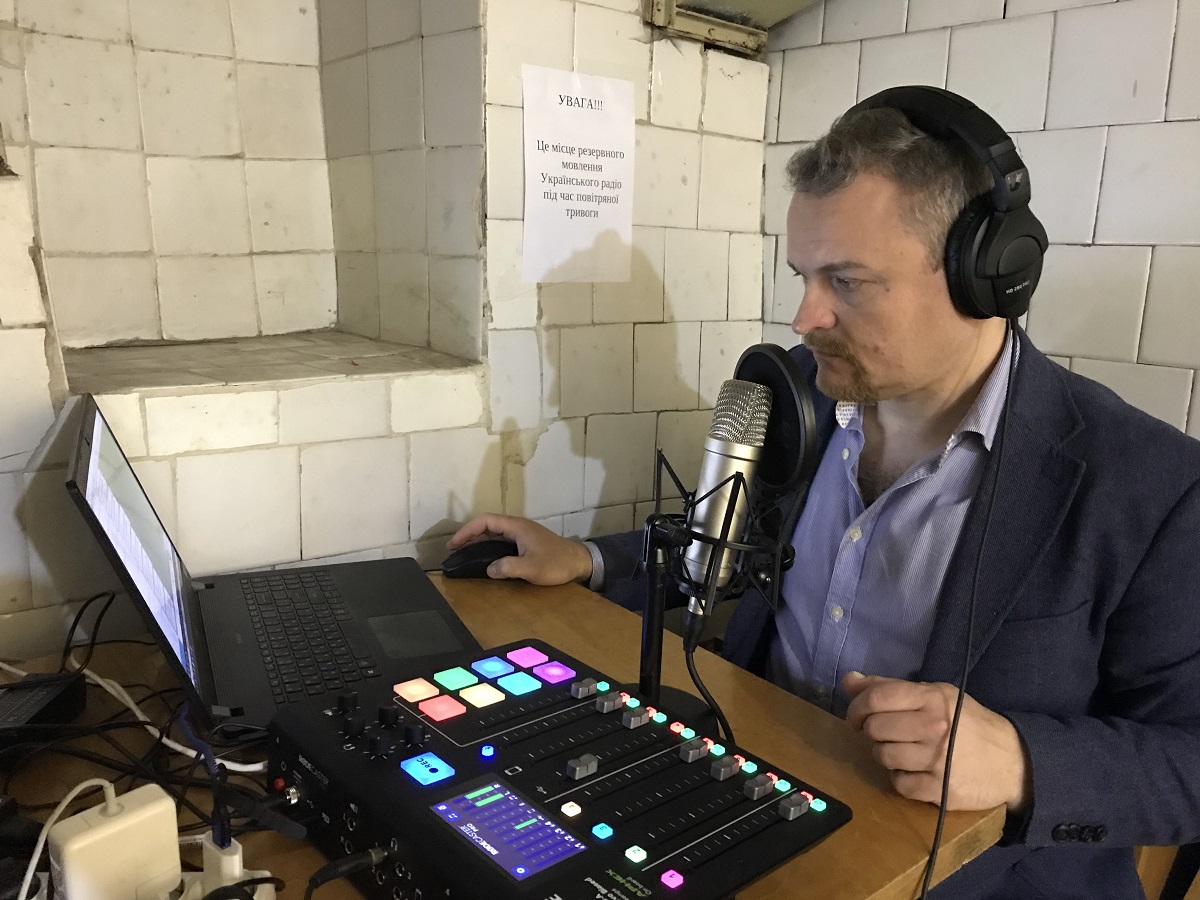
Ведучий Українського Радіо Роман Коляда виходить в ефір в укритті
Частина працівників вирушила в інше місто, яке тоді здавалося менш вразливим і з якого можна було продовжувати прямі ефіри. Поки спікери намагалися виїхати у безпечні місця й вивезти свої родини або були зайняті підготовкою оборони районів і домівок, радіо мовило. У цей момент до ефіру оперативно долучалися журналісти регіональних редакцій Українського Радіо з усіх областей. Щогодинні включення вдень і вночі із Сум чи Житомира, Херсона чи Луцька, Одеси чи Харкова… з усіх міст надавали точну, перевірену інформацію.
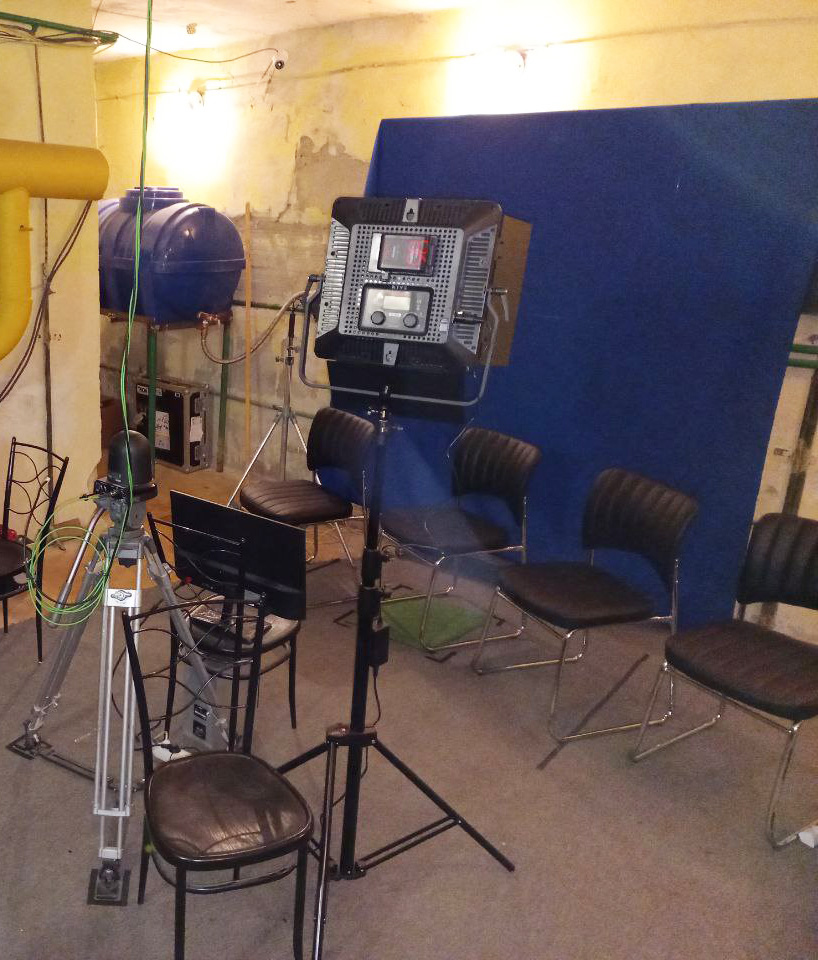
Підготовка до радіоефіру з бункера
 За кілька днів для багатьох радіо стало єдиним зв’язком зі світом
За кілька днів для багатьох радіо стало єдиним зв’язком зі світом
З 1924 року Українське Радіо не замовкало, і під час повномасштабного вторгнення росії ми вистояли, згуртувалися й не припинили мовлення. За кілька днів для багатьох радіо стало єдиним зв’язком зі світом. В окупованих містах і селах, у підвалах і погребах, без електрики й мобільного зв’язку люди вмикали радіоприймачі на батарейках і слухали, де є «зелені коридори», якими шляхами можна вибратися з окупації, яка ситуація на фронті, як вижити.
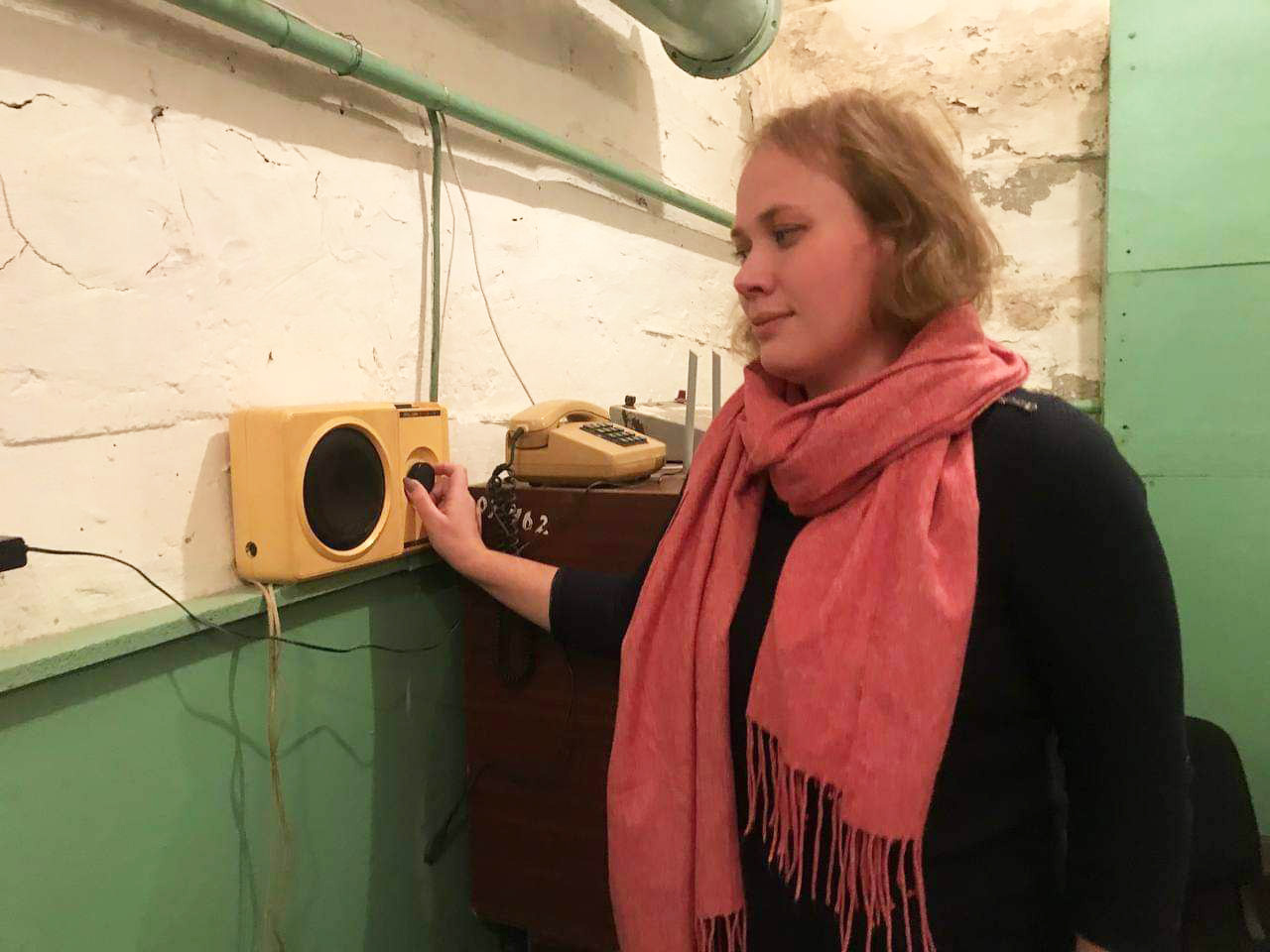
Ірина Данильчук, журналістка рівненської регіональної редакції Українського Радіо, готується до прямого включення. У бомбосховищі перевіряє, чи є ефір радіо
Радіостанції Суспільного Мовлення мають найбільшу мережу регіональних журналістів, тому нам вдавалося детально, з дотриманням журналістських стандартів, оперативно розповідати про ситуацію у всіх містах, селах, громадах. У дорозі, евакуюючи свої родини, наші кореспонденти виходили в ефіри. Вони берегли заряд телефонів і вмикалися зі знеструмлених підвалів під час потужних обстрілів, надсилали записи або й наживо долучалися до прямих ефірів з окупованих територій.
Читайте також: За пів року Українське Радіо суттєво зміцнило лідерські позиції — опитування
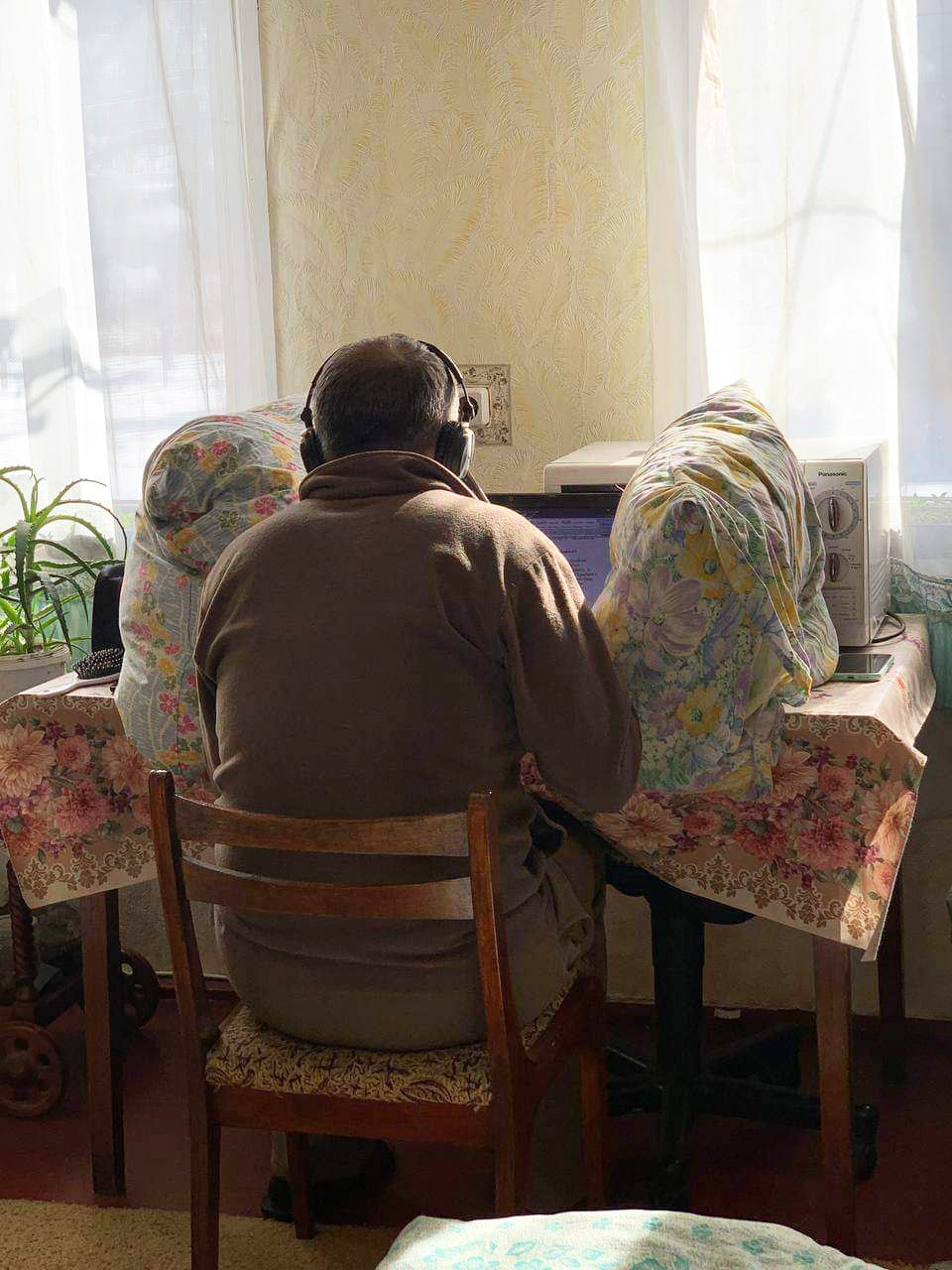
Андрій Соколов, журналіст чернігівської регіональної редакції Українського Радіо, в евакуації в селі. Подушки використовував як звукопоглинач, бо якість звуку повинна бути високою за будь-яких обставин, а сюжети мають звучати в ефірі й під час війни
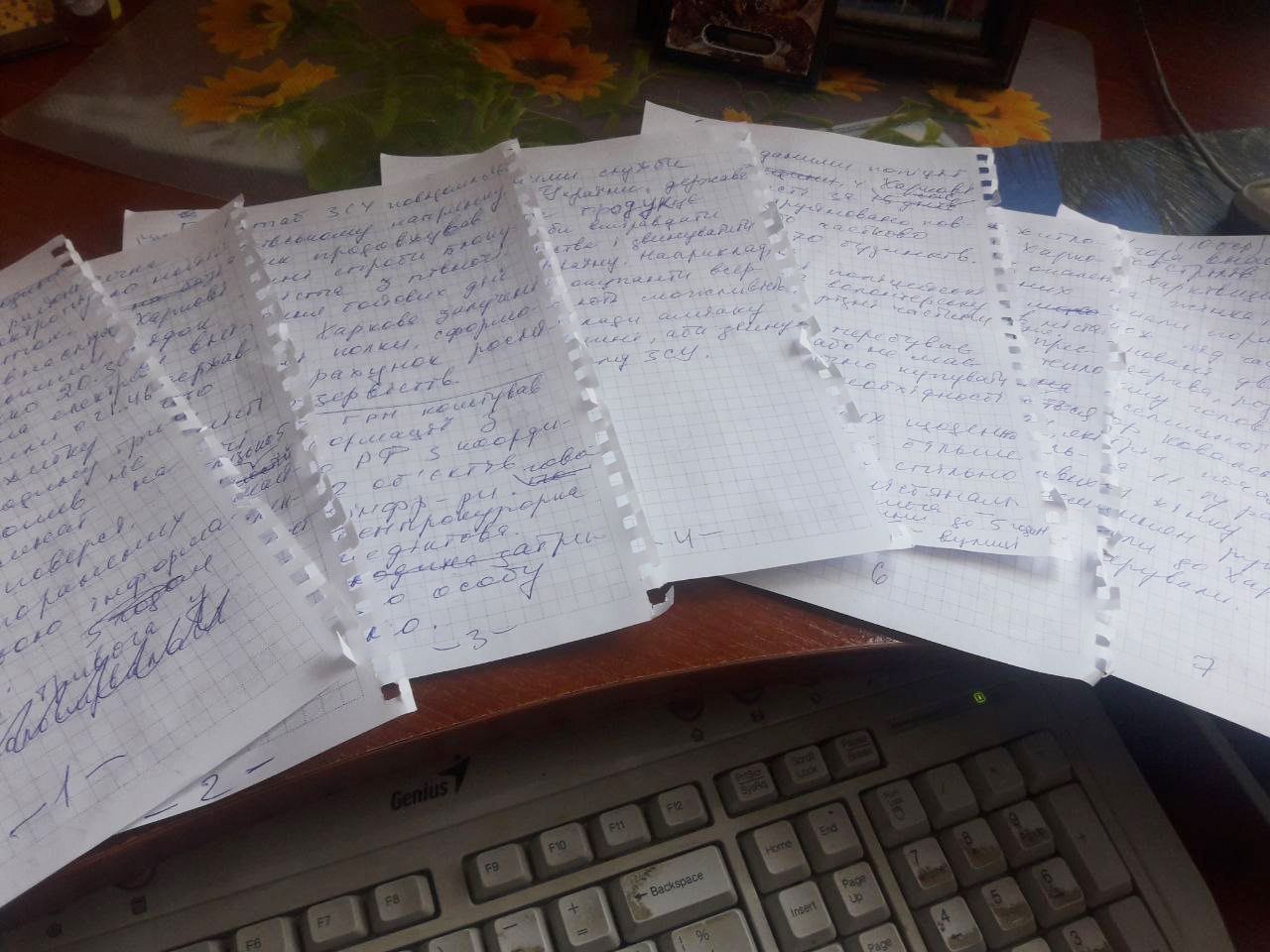
Через відсутність світла Роман Кривко, журналіст харківської регіональної редакції Українського Радіо, підготував текст сценарію на папері. Умови роботи радійників у XXI столітті
 Всіх нас єднає радіо і віра в перемогу
Всіх нас єднає радіо і віра в перемогу
Нині, як і рік тому, команда Українського Радіо продовжує виконувати свою роботу. Багато хто захищає рідну державу у лавах ЗСУ, дехто був змушений рятувати дітей, родини й евакуювався за кордон, решта — на робочих місцях або у бомбосховищах пишуть сценарії, монтують сюжети, мовлять в ефірі. Та всіх нас єднає радіо і віра в перемогу. Суспільному довіряють, тож ми з усією відповідальністю продовжуємо.
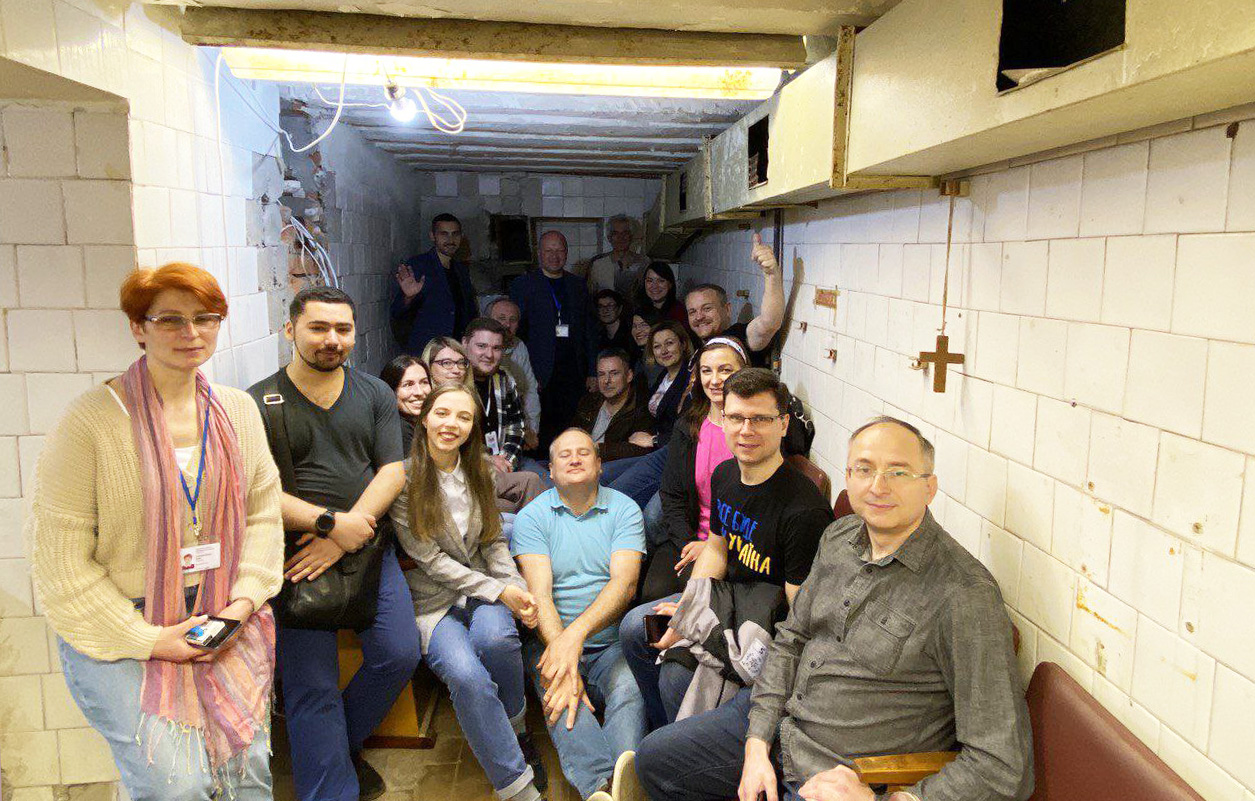
Команда Українського Радіо в укритті
Українське Радіо — найбільша FM-мережа та найпопулярніше розмовне радіо України, флагманський канал Національної суспільної телерадіокомпанії України. У Києві мовить на частоті 105 FM. З усіма частотами Українського Радіо та лінками на соцмережі Суспільного в регіонах можна ознайомитися за посиланням. Українське Радіо також можна слухати в мобільному застосунку suspilne.radio, на сайті ukr.radio та в мобільному застосунку «Дія».
Фото — з особистого архіву Юлії Шелудько
Yuliia Sheludko: “We are all united by radio and faith in victory”
Yuliia Sheludko, Executive Producer of Ukrainian Radio, has been working here for five years. All this time, she has been coordinating the work of all regional radio editorial offices in the branches of Suspilne. When the full-scale offensive began, it was important to keep in touch with the correspondents. Like others, they were under fire, on the road, in evacuation, but continued to collect and verify information and go on the air. People needed Ukrainian Radio more than ever, because it was a reliable source of news and broadcast in places where there was no Internet or television. Yuliia Sheludko talked about how the radio workers worked in her column for Suspilne.
Read also: 10 symbols of sustainability of Suspilne Ukraine - what are they?
 The presenters went to work at the crack of dawn to tell their listeners what was happening amid the sound of explosions
The presenters went to work at the crack of dawn to tell their listeners what was happening amid the sound of explosions
A year ago, on the eve of a full-scale invasion, tensions in Ukraine were rising every second. Some people were packing emergency bags, others had a plan for what to do in case of emergency... But there were also those who did not believe that a major war could break out in Europe in the 21st century. Everyone was nervous to a greater or lesser extent, but they did their job. Suspilne Ukraine, as it did every day, provided timely information from reliable sources. On 24 February, everyone woke up to terrible news. Of course, there were evacuation plans, plans to save people and preserve broadcasting. The presenters went to work at the crack of dawn to tell listeners what was happening amid the sounds of explosions, to remind them what to take if they were to leave their homes in an emergency, and on which waves in which region to listen to Ukrainian Radio in the car or in a safe place at home.

Ukrainian Radio presenter Roman Koliada goes on the air in a shelter
Some of the staff went to another city that seemed less vulnerable at the time and from which they could continue to broadcast live. While the speakers were trying to get to safe places and get their families out or were busy preparing to defend their neighborhoods and homes, the radio was broadcasting. At this point, journalists from Ukrainian Radio's regional offices in all regions promptly joined the broadcast. Hourly broadcasts day and night from Sumy or Zhytomyr, Kherson or Lutsk, Odesa or Kharkiv... from all cities provided accurate, verified information.

Preparing for radio broadcast from the bunker
 In a few days, radio became the only connection to the world for many
In a few days, radio became the only connection to the world for many
Since 1924, Ukrainian Radio has not stopped broadcasting, and during the full-scale russian invasion, we survived, rallied, and did not stop broadcasting. In a few days, radio became the only connection with the world for many. In the occupied cities and villages, in basements and cellars, without electricity and mobile communication, people turned on battery-powered radios and listened to find out where the “green corridors” were, what ways they could get out of the occupation, what the situation was at the front, and how to survive.

Iryna Danylchuk, a journalist at the Rivne regional office of Ukrainian Radio, prepares for a live broadcast. In a bomb shelter, she checks whether the radio is still on the air
Suspilne Ukraine radio stations have the largest network of regional journalists, so we were able to promptly report on the situation in all cities, villages, and communities in detail, in compliance with journalistic standards. On the road, while evacuating their families, our correspondents were on the air. They kept their phones charged and switched on from de-energized basements during heavy shelling, sent recordings or joined live broadcasts from the occupied territories.
Read also: Ukrainian Radio significantly strengthens its leadership position in six months - survey

Andrii Sokolov, a journalist at the Chernihiv regional office of Ukrainian Radio, in evacuation in the village. He used the pillows as a sound absorber because the sound quality should be high under any circumstances, and the stories should be broadcast even during the war

Due to the lack of light, Roman Kryvko, a journalist at the Kharkiv regional office of Ukrainian Radio, prepared the text of the script on paper. Working conditions of radio workers in the XXI century
 We are all united by radio and faith in victory
We are all united by radio and faith in victory
Today, just like a year ago, the Ukrainian Radio team continues to do its job. Many of them are defending their country in the ranks of the Armed Forces of Ukraine, some were forced to save children and families and evacuated abroad, while others are writing scripts, editing stories, and broadcasting on the air at their workplaces or in bomb shelters. But all of us are united by radio and faith in victory. People trust the public broadcaster, so we continue with all responsibility.

Ukrainian Radio team in the shelter
Ukrainian Radio is the largest FM network and the most popular talk radio in Ukraine, the flagship channel of the Public Broadcasting Company of Ukraine. Ukrainian Radio can be heard in FM and AM bands throughout the country. In Kyiv it broadcasts at 105 FM. All frequencies of Ukrainian Radio and links to the social networks of Suspilne in the regions can be found here. Ukrainian Radio can also be listened to in the mobile application suspilne.radio, on the website ukr.radio and in Diia mobile application.
Photos from the personal archive of Yuliia Sheludko


